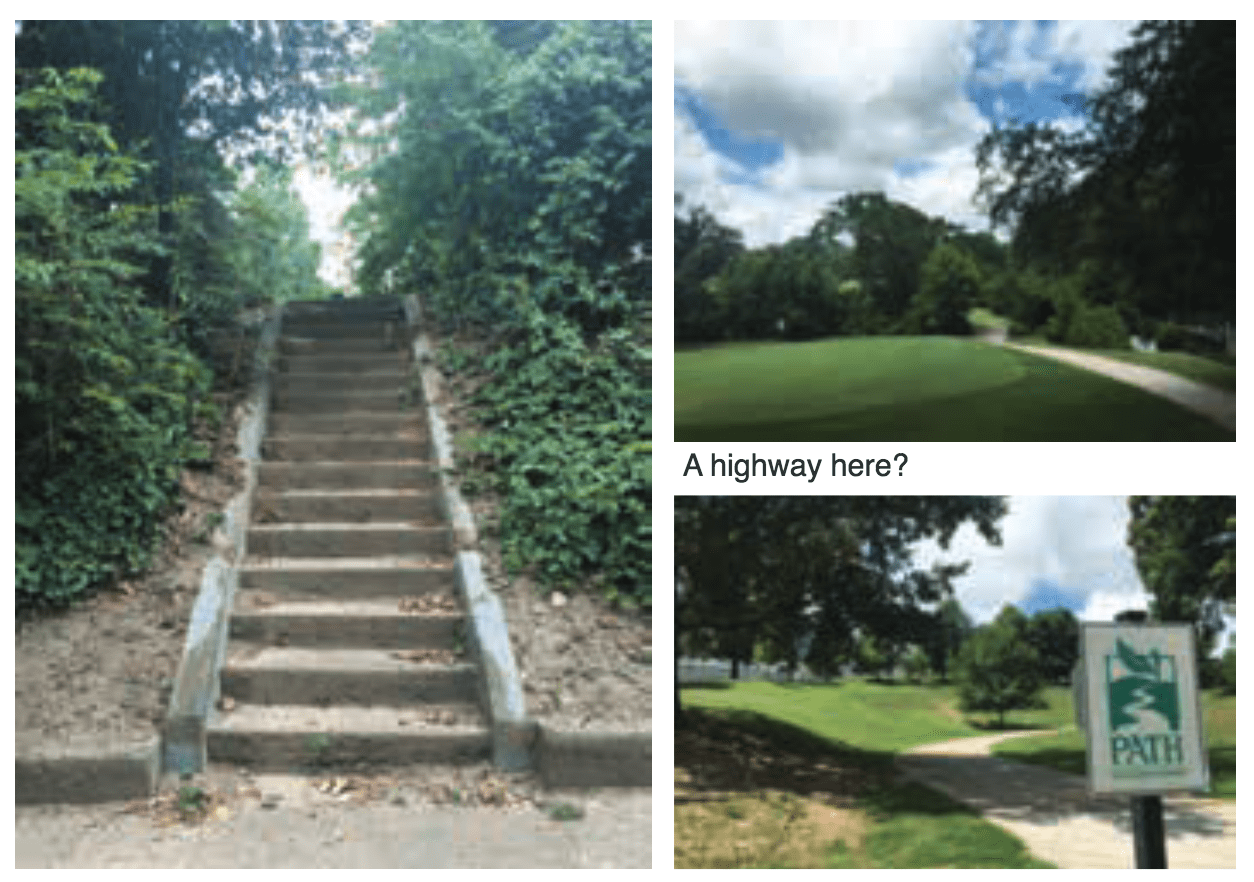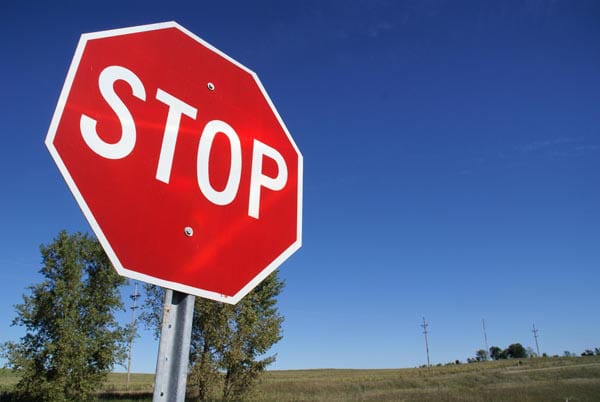How Intown Atlanta Was Saved From The Stone Mountain Expressway
By Susan Rose, (article from The Messenger)
Imagine a four-lane elevated expressway originating in downtown Atlanta, going around the current site of the Carter Center, cutting across the dozens of acres of Freedom Park, traversing Goldsboro Park, snaking its way right next to the Mary Lin school auditorium, barreling across the “back 9” of Candler Park golf course and Lullwater Creek, and then veering left to dump into Ponce de Leon Avenue right through Olmsted’s historic Shady Side Park. For Candler Park residents in the 1980s, this was a real and frightening possibility. However, residents across many intown Atlanta neighborhoods united in protest and succeeded in blocking the expressway through legal and civil disobedience means over a 10-year period.
The Original Battle: The Stone Mountain Freeway
In the 1950s, the Georgia Department of Transportation (GDOT) began planning a series of highways that would cut through many historic neighborhoods in Atlanta. The original plan had GA 400 continuing south from its current end at I-85 and proceeding through Morningside, Virginia-Highlands, and Poncey-Highlands and intersecting with a proposed Stone Mountain Freeway at Copenhill, the current site of the Carter Center. The east-west Stone Mountain Freeway was planned to originate downtown and run along the current Freedom Parkway, through Freedom Park, and then turn to run parallel to Ponce de Leon and Scott Boulevard until meeting the current Stone Mountain Freeway near North Dekalb Mall.
In the 1960s, GDOT began taking property through eminent domain and clearing land. (Eminent domain is a right of a government to take private property for public use.) Along North Avenue in Candler Park are some remaining stairs and driveway entrances from the residential properties destroyed by GDOT.
In the 1960s and early 1970s, neighborhood groups, such as the Morningside Lenox Park Association, formed and began a legal fight against the Stone Mountain Freeway. Inman Park residents became active in the fight especially since a small group of homeowners were beginning to rehabilitate the Victorian-era homes with a focus to move the neighborhood from dilapidated boarding houses to owner-occupied homes. The Candler Park Neighborhood Organization originated during this time also. In 1973, the federal DOT rejected the required environmental impact study of both highways deeming it as an underassessment of the highway’s impact to intown neighborhoods. By the mid 1970s, GDOT was directed to remove the highways from its long term plan, and the cleared land was unused (except by nature) for a decade.

The Presidential Parkway Reignites the Battle
In 1981, when former President Jimmy Carter chose Copenhill as the site for his Presidential Library and the Carter Center, he bought several acres of the land. In addition, GDOT offered to lease almost 30 additional acres on the condition that a 3 mile east-west expressway would be built. Carter garnered support for the highway from then Mayor Andrew Young, the Atlanta City Council and the Chamber of Commerce. The proposed “Presidential Parkway” would connect the new Carter Center to downtown Atlanta as well as to Druid Hills to the west and almost to Emory University.
Neighborhood activists quickly formed a strategic fight against the road. CAUTION (Citizens Against Unnecessary Thoroughfares In Older Neighborhoods) served as the legal entity. According to the Freedom Park Conservancy website, CAUTION spent more that $600,000 in legal fees and received almost the same amount in pro bono services. Road Busters was the group that organized demonstrations and civil disobedience activities. They also scheduled elected leaders to speak at demonstrations, including Congressman John Lewis and former Congressman Ben Jones.Candler Park resident Lexa King recalls, “Protesters were camping in tents in Shady Side Park along Ponce. I would take hard boiled eggs down to them in the morning and my two young kids would go with me.”
A video on the Freedom Park Conservancy website shows people chaining themselves to trees, as well as climbing trees in an effort to prevent construction workers from cutting them down. Demonstrators with signs protested along the high traffic Ponce de Leon Avenue — some protesters were arrested by the Atlanta police. “People were laying down in front of bulldozers at Goldsboro Park which had pylons built for the bridges,” said King. Th e 1980s era video on the Freedom Park Conservancy website shows kids sledding on the Candler Park Golf Course, just as Candler Park kids do today. Three boys are asked how they feel about the Parkway and they say, “It stinks. I hate it. Th ey shouldn’t do it.”Candler Park resident Mark Clement, who grew up in the neighborhood, said, “I remember the passion of the activists and the sense of unity. Kids were buying and wearing their ‘Stop the Road’ shirts to school.”
Th rough the 1980s there were starts and stops to the protests as lawsuits were won and lost. By 1991, only Carter and GDOT remained in support of the Presidential Parkway. Th e announcement of Atlanta hosting the 1996 Olympic Games forced a final decision. With input from CAUTION, Lt. Governor Pierre Howard and DOT Commissioner Wayne Shackleford reached a compromise resulting in the Freedom Parkway as it exists today. Candler Park and Druid Hills were the primary advocates for the road to end at Freedom Park; thus allowing the ‘Great Park’ vision to be realized.
“We were so united in the fight against the road,” said King. “Nobody wins against a government machine like that. And we won. And now we have a lot of green space that most inner city neighborhoods don’t have.”
“Seeing this as a kid instilled in me a strong sense of community,” said Clement. “It showed how important it is to get involved, stay involved, and fight decisions that negatively affect our neighborhood.”An audio recording of Congressman John Lewis at one of the protests is part of the video on the Freedom Park Conservancy website. He motivated the crowd by saying “So, by being here today, you are making it plain and crystal clear that this is our land. And we will struggle. We will fight. And we will do whatever it takes to keep this land and pass it on to the next generation.”Many thanks to all Candler Park residents who fought the highways and preserved the beauty of the Candler Park neighborhood.



